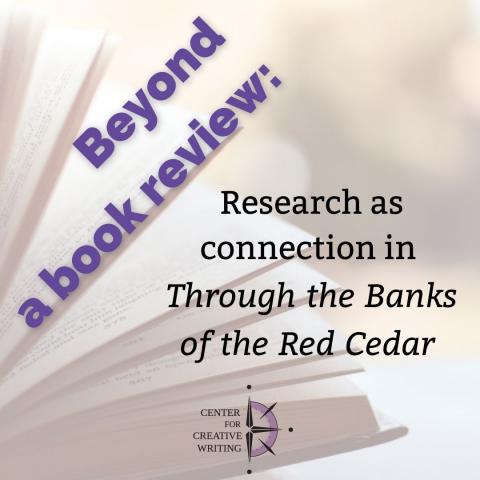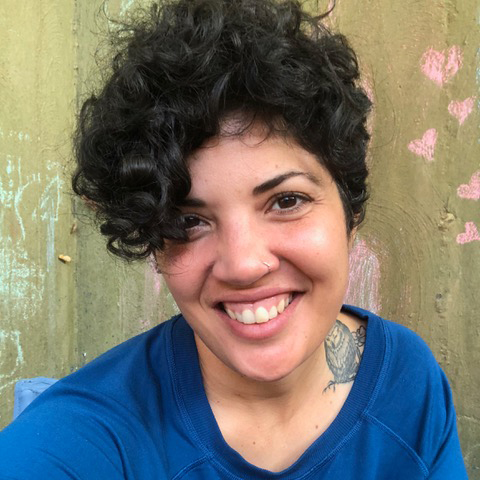
Shawna Ayoub moves "beyond the book review" in not only recommending great books by diverse writers, but highlighting a technique to apply to your own writing.
Through the Banks of the Red Cedar, by Maya Washington
When Maya Washington sets out to get to know her father, she does so by tracing his impact on football. Her father is Gene Washington, a powerful force for racial integration first as a Black player of college football, and then again when drafted into the NFL in 1967. Through the Banks of the Red Cedar chronicles Washington's research into who her father was and is, with him alongside her for much of the journey. The book is crafted with love and respect and is an important text for comprehending the risk undertaken by Black football players breaking into the game. Ultimately, the landscape of the game is forever changed—think for a moment about the makeup of a typical American football team today. Gene Washington was a driving force for why there is such strong representation on the field.
This book is fascinating for numerous reasons, not the least of which is because Washington does an amazing job navigating the tough and racist waters of American football’s history with a compassionate eye. Reading this book shows both how far we’ve come regarding desegregation in the U.S. and how far we still have to go when it comes to decolonizing our systems and thinking. In fact, there are multiple ways this book does double duty; its research was also used to create a documentary by the same name. But what I want to look at is the way Washington uses research to develop a connection with a family member.
Research as connection in nonfiction writing
Let me lean into this idea a little bit by sharing that I never knew the ages of my father’s parents, because they didn’t know their own ages. When and where they were born, there were no birth records. Lineage was passed down by using the father’s first name as the child’s middle name. My great-grandfathers’ names are all the family history I got before they passed away. While the reasons were more complicated (different countries, different languages, etc.), I would have loved to be closer to them by learning more about them. That opportunity passed when they did.
The idea that Washington is able to connect with her father (and her mother) by using her writing to tell his story is not a new move. For centuries, writers have done so through autobiographies. But this book is not an autobiography—it tells Washington’s story as well. That’s what has me celebrating this text—the author is present in the writing. Ultimately, she becomes the bridge between past and present, her father and the reader.
Through the Banks of the Red Cedar has me asking myself how we can avoid the disconnect that happens when we report the stories of others by showing up in the stories we are telling.
A writing exercise
Let’s experiment. You’ll need paper and 30 minutes.
- (10 min) Think of a story a friend or family member told you about their own life. It can be a story from the far or distant past, but it should be a true story. Write it down.
- (20 min) Think about how you could tell this story through your own personal lens. Is there a character you can connect to, or an incident that is similar to one you’ve experienced? How might inserting yourself into this told story make a bridge between past and present? Rewrite the told story with your reactions, feelings, dialogue, and/or thoughts as part of the story.
How did the story change? What was revealed? What questions came up?
Here is what I think happens when we place ourselves in a story we did not think of as our own: We become reflective. Opportunities for greater understanding of the story arise along with opportunities for compassion because we are actively unfolding the story, taking it from flat to three-dimensional.
Feel free to share your experience with this exercise in comments. I would love to know if my theory holds true for you.
And read this book. It will challenge you in ways you deserve to be challenged.
Will you try this exercise? Read this book? Share with us in the comments.
Buy Through the Banks of the Red Cedar at Bookshop.org (and support independent bookstores across the U.S.)
Related reading: Beyond a Book Review: Intuition in River Woman, River Demon
Beyond a Book Review: Timeline(s) in Becoming AppalAsian
Beyond a Book Review: Unwieldy Creatures
Beyond a Book Review: Containers as safe spaces in Nonwhite and Woman
Beyond a Book Review: Footnotes in Belly to the Brutal
Want to receive tips and inspiration like this in your inbox every Sunday morning? Join our email list community! You will receive weekly advice, a year’s worth of weekly writing prompts as a FREE download, and be eligible to participate in our monthly photo prompt contest for a chance to share an original piece of writing with our community of more than 2,500 writers.
